It is about how you show a three-dimensional world on a two-dimensional plane. A lot depends on where you place yourself when capturing a scene. This article will tackle perspective from all the possible angles. What exactly is the purpose of perspective? Read on to find out more about perspective in photography! [ExpertPhotography is supported by readers. Product links on ExpertPhotography are referral links. If you use one of these and buy something, we make a little bit of money. Need more info? See how it all works here.]
What Is Perspective in Photography
Perspective photography looks at two areas. The definitions are: On a basic note, perspective gives depth. There are many things we can do to make a scene look more realistic. Remember, a photograph is not three-dimensional. It is only a representation of a three-dimensional world. Just like we use motion blur to give an impression of movement, we use perspective to give an impression of depth. That’s why perspective photography is so important.
Let’s Look at Perspective From a Physical Standpoint
There are things you can do to change the perspective of an image. By moving around your camera, you can gain a better viewpoint than your usual eye level. It is easy to fall into the habit of photographing every scene from eye level. You notice something that catches your eye, and you want to capture the fleeting moment. But if you want your photography to make an impact, you need to move!
Why You Should Move Left and Right
When you come across a scene, don’t go for your first idea. Take a step left or right to find a better vantage point. Even moving one metre can have an immense effect on your image. If you move a small distance, the background doesn’t change much. But the foreground does. The closer the foreground, the bigger the impact. You may find you are able to naturally frame that mountain with the trees. It could be the best or the photograph you have taken. At the very least, you have tried a different perspective and seen the impact it can have. This is even more important when photographing architecture. You aren’t going to take one image and go home. If you made the trip to shoot something special, you need to make good use of your time. Walk around the structure and photograph it from different lateral positions. You may find that the idea changes with each movement.
Why You Should Move Up and Down
Change your position or the position of your camera. That way, you can find some interesting and new perspectives. Imagine you are photographing a street scene. You decide to get down to the perspective of a medium-sized dog. You will look at the world in a whole different way. We all observe the street through the same eyes, day in and day out. But change your vertical position, and you have an interesting take on a mundane place or scene. Trying a higher perspective gives you a different viewpoint of an object. If you are photographing a building from street-level, you only capture a small part of it. You can angle your camera up (we discuss this in-depth in the next paragraph). But that will give you perspective distortion. Try going across the street and getting up high. Then you can show the building from the side without the distortion.
Why You Should Move Your Angle
Changing your angle allows you to see and show the world from a different aspect. Living in Budapest, I am shocked to see how many people don’t look up at all. All the interesting building details are above the first floor. You won’t see these until you stop looking in front of you all the time. The same goes for looking down. There is a reason why aerial photography is so popular. It’s because these images offer us something new and exciting. We almost never get to see the world from a high position. Looking down at an angle gives us a fresh look and a new perspective. They don’t have to be bird’s eye views. But a point that is higher than our usual level.
You will find that you can manipulate the size of subjects. Make them difficult to comprehend. Confuse our powerful yet impressionable minds. Perspective distortion is a common way to confuse the human brain. It becomes clear when you photograph a tall building from up close. The top of the building is further away from the film/sensor plane than the bottom. This gives the subject the impression that the top is falling away.
Look at Perspective From a Conceptual Point of View
You don’t always have to move yourself to gain a different perspective or viewpoint. You can use conceptual ideas too. Looking at your scene and imagining the final images is a great way to find the best perspective. You can trick the viewer’s mind into looking at a scene in a particular way.
Use Distance to Create Different Perspectives
In this case, distance is more of a conceptual idea rather than a physical one. We’re not talking about the distance between you and the subject to think about. Look at the distance between the background and subject too. The subject closest to you will look the biggest. Our brain depicts distance as the difference between the background and subject, or foreground. When we see an object blocking the view of another object, the first object is closer to the viewer than the latter. This is otherwise known as overlap perspective in photography. If this overlap repeats, the viewer gets a sense of a three-dimensional reality. Try photographing a scene, a cityscape for instance, at an angle from a high vantage point. This way, you can manipulate the viewer’s perspective. By filling the frame, the viewer has no point of reference for size. This is a great way to confuse and add interest to a scene.
Use Composition Rules for Interesting Results
Use composition in a scene or setting to create an idea of depth. Leading lines do this well. When we look at an image, our eyes bounce around a two-dimensional plane. Yet, by looking at an image where the scene draws our eyes ‘in’, we give a sense of depth. Humans judge distance by the way lines and planes converge at an angle. This is ‘linear perspective’, and you can manipulate it too. When we look at parallel lines at a great distance, they give us the sensation of that they meet in the distance. This meeting point is the vanishing point, and we sense it even if we cannot see it. Rail tracks are a great example. The converging parallel lines create an illusion. This shows distance or depth in the photographed scene.
Experiment with Different Lenses to Add Variation
Lenses are a great way to change your perspective of a scene. Different lenses can help you capture various perspective illusions. A telephoto lens tends to squash the subject and the background closer together. While ultra-wide-angle or fisheye lenses make them look farther away. These wide-angle lenses also make objects around the sides seem smaller. They also make the subjects in the center much bigger than they are in reality. These lenses also make all the straight lines outside the lens axis look curved. This can alter your perception of the scene and its representational depth. Many people think that changing your focal length changes perspective. It may change how close you can get to a subject. But your perspective doesn’t change.
Use Forced Perspective to Create an Illusion
Another way our perspective of a scene changes is through the idea of forced perspective. This refers to the relative size of the objects and subjects you are photographing. It involves distance. But the distance between two important subjects in the foreground and background. Our brain is smart in the way that we have amassed ideas of how large items are. We all know the size of a tree, or a house, or a car. But what if we see a person the same size as a structure (Eiffel Tower, Leaning Tower)? We cannot rationalise that the person is actually that big. Try placing objects at different distances. But give the impression they are on the same plane. You’ll definitely produce some mind-bending images.
Play Around with Sharpness, Color, and Contrast
We can affect depth with the help of leaving things out of our scenes. Lowering contrast, scattering light or desaturating color are all helpful tools in this as they take away our depth perception. By focusing your lens to ‘infinity’, you place everything in the scene in focus. But, if you focus just short of that, the impression of depth becomes bigger. Why? Well, our eyes have nowhere to rest, so the idea is that the scene is so deep, it never finds the focus.
Conclusion
Next time you plan on photographing a scene, take perspective photography into account. It will help you find the best position and angle to take the image from. And it will add variation to your photography. When you come across a subject or scene, you should be photographing it in many different ways. This will help you shoot a wide range of images to pick your favourite from. Looking to learn more about beginner photography techniques? Why not check out our course Photography for Beginners next!
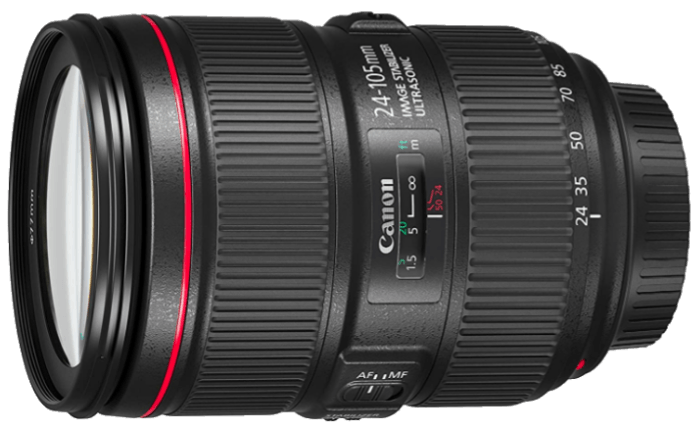


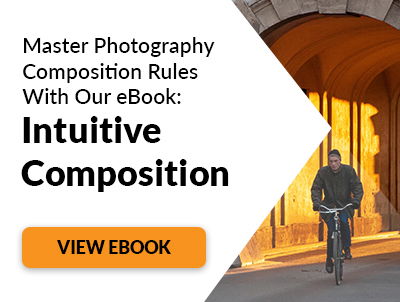
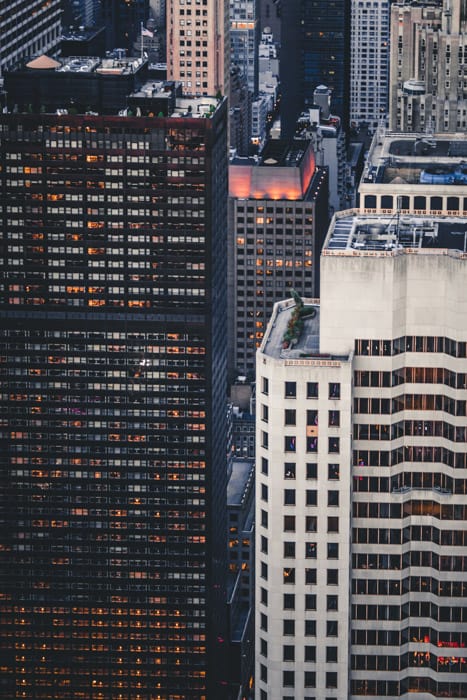
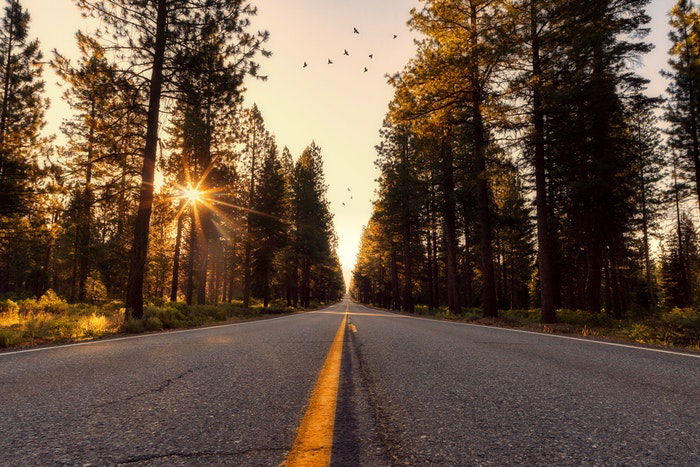
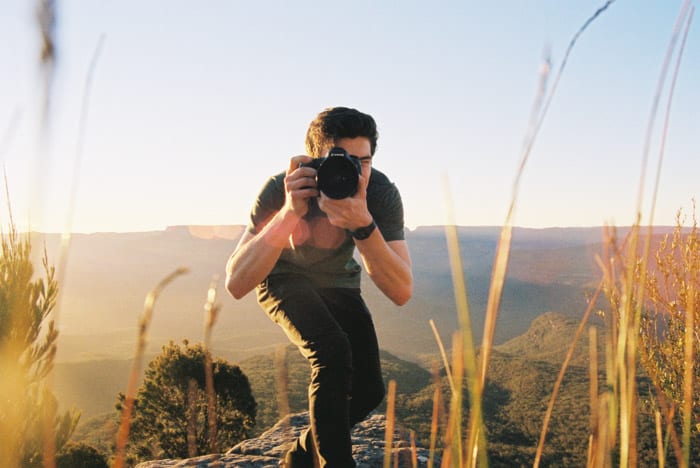
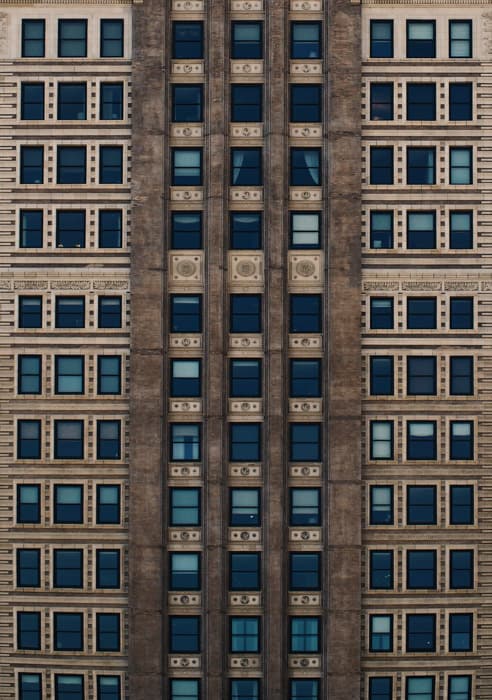
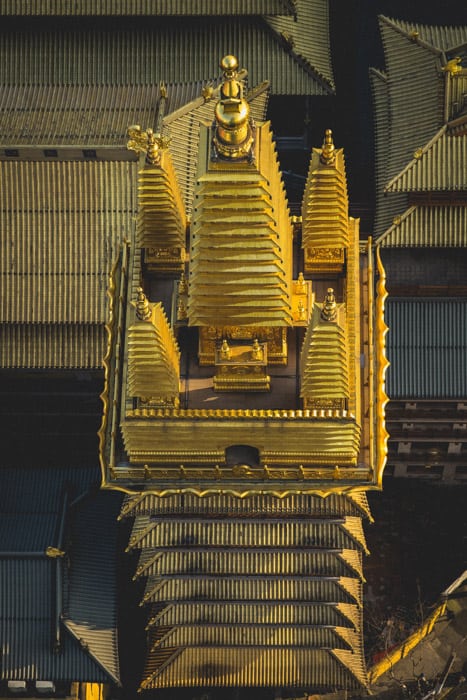
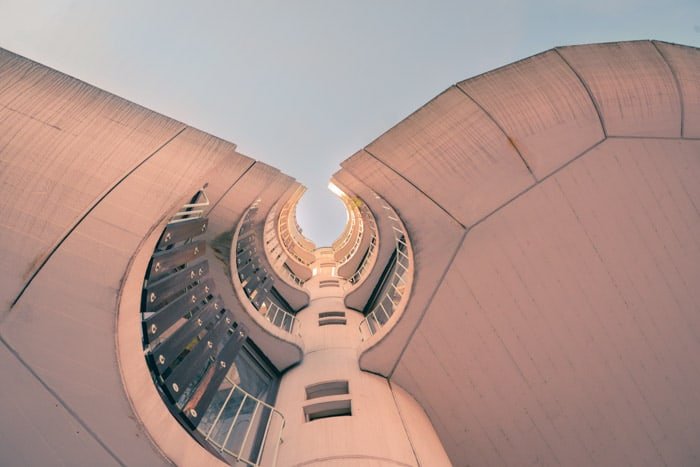
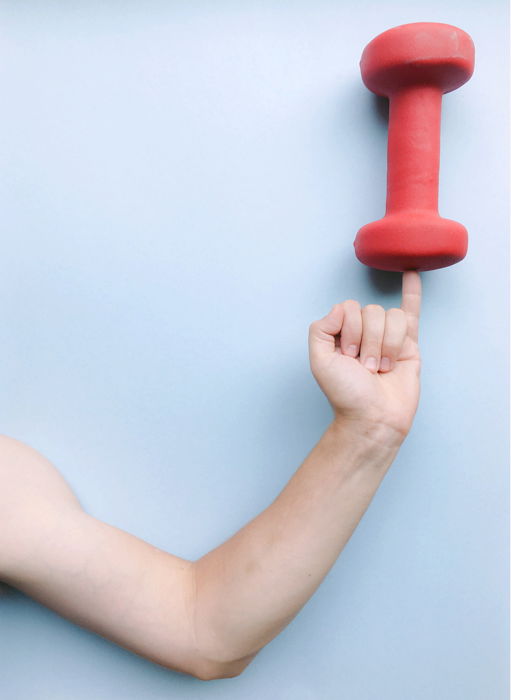

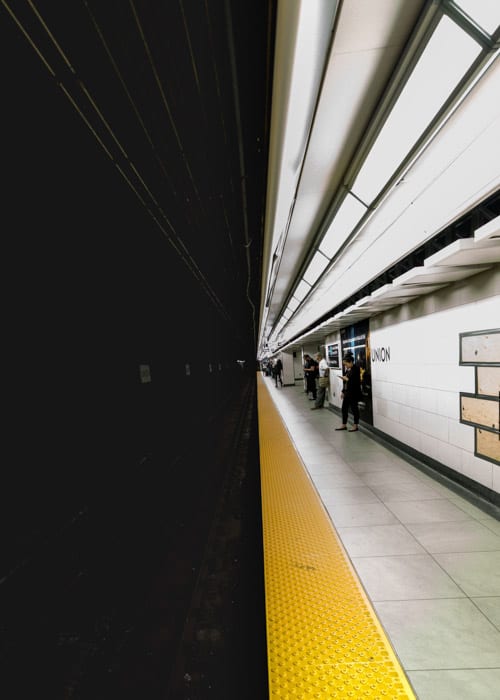
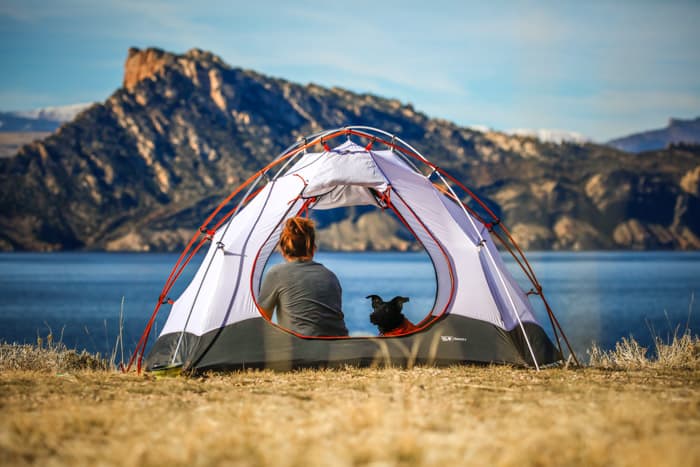
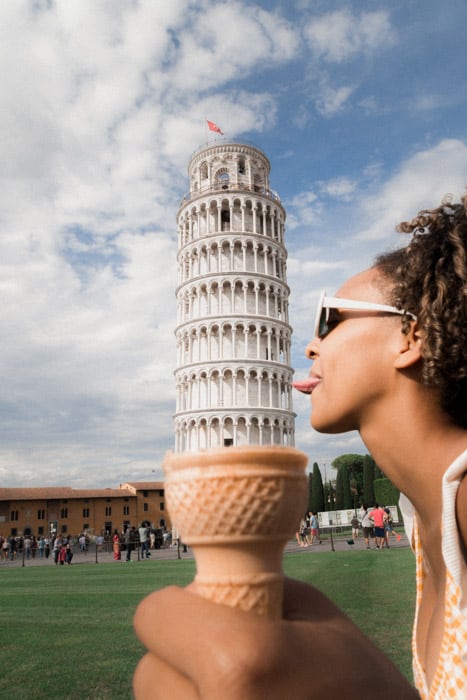



title: “What Is Perspective In Photography And How To Use It " ShowToc: true date: “2023-01-24” author: “Caroline Fielden”
It is about how you show a three-dimensional world on a two-dimensional plane. A lot depends on where you place yourself when capturing a scene. This article will tackle perspective from all the possible angles. What exactly is the purpose of perspective? Read on to find out more about perspective in photography! [ExpertPhotography is supported by readers. Product links on ExpertPhotography are referral links. If you use one of these and buy something, we make a little bit of money. Need more info? See how it all works here.]
What Is Perspective in Photography
Perspective photography looks at two areas. The definitions are: On a basic note, perspective gives depth. There are many things we can do to make a scene look more realistic. Remember, a photograph is not three-dimensional. It is only a representation of a three-dimensional world. Just like we use motion blur to give an impression of movement, we use perspective to give an impression of depth. That’s why perspective photography is so important.
Let’s Look at Perspective From a Physical Standpoint
There are things you can do to change the perspective of an image. By moving around your camera, you can gain a better viewpoint than your usual eye level. It is easy to fall into the habit of photographing every scene from eye level. You notice something that catches your eye, and you want to capture the fleeting moment. But if you want your photography to make an impact, you need to move!
Why You Should Move Left and Right
When you come across a scene, don’t go for your first idea. Take a step left or right to find a better vantage point. Even moving one metre can have an immense effect on your image. If you move a small distance, the background doesn’t change much. But the foreground does. The closer the foreground, the bigger the impact. You may find you are able to naturally frame that mountain with the trees. It could be the best or the photograph you have taken. At the very least, you have tried a different perspective and seen the impact it can have. This is even more important when photographing architecture. You aren’t going to take one image and go home. If you made the trip to shoot something special, you need to make good use of your time. Walk around the structure and photograph it from different lateral positions. You may find that the idea changes with each movement.
Why You Should Move Up and Down
Change your position or the position of your camera. That way, you can find some interesting and new perspectives. Imagine you are photographing a street scene. You decide to get down to the perspective of a medium-sized dog. You will look at the world in a whole different way. We all observe the street through the same eyes, day in and day out. But change your vertical position, and you have an interesting take on a mundane place or scene. Trying a higher perspective gives you a different viewpoint of an object. If you are photographing a building from street-level, you only capture a small part of it. You can angle your camera up (we discuss this in-depth in the next paragraph). But that will give you perspective distortion. Try going across the street and getting up high. Then you can show the building from the side without the distortion.
Why You Should Move Your Angle
Changing your angle allows you to see and show the world from a different aspect. Living in Budapest, I am shocked to see how many people don’t look up at all. All the interesting building details are above the first floor. You won’t see these until you stop looking in front of you all the time. The same goes for looking down. There is a reason why aerial photography is so popular. It’s because these images offer us something new and exciting. We almost never get to see the world from a high position. Looking down at an angle gives us a fresh look and a new perspective. They don’t have to be bird’s eye views. But a point that is higher than our usual level.
You will find that you can manipulate the size of subjects. Make them difficult to comprehend. Confuse our powerful yet impressionable minds. Perspective distortion is a common way to confuse the human brain. It becomes clear when you photograph a tall building from up close. The top of the building is further away from the film/sensor plane than the bottom. This gives the subject the impression that the top is falling away.
Look at Perspective From a Conceptual Point of View
You don’t always have to move yourself to gain a different perspective or viewpoint. You can use conceptual ideas too. Looking at your scene and imagining the final images is a great way to find the best perspective. You can trick the viewer’s mind into looking at a scene in a particular way.
Use Distance to Create Different Perspectives
In this case, distance is more of a conceptual idea rather than a physical one. We’re not talking about the distance between you and the subject to think about. Look at the distance between the background and subject too. The subject closest to you will look the biggest. Our brain depicts distance as the difference between the background and subject, or foreground. When we see an object blocking the view of another object, the first object is closer to the viewer than the latter. This is otherwise known as overlap perspective in photography. If this overlap repeats, the viewer gets a sense of a three-dimensional reality. Try photographing a scene, a cityscape for instance, at an angle from a high vantage point. This way, you can manipulate the viewer’s perspective. By filling the frame, the viewer has no point of reference for size. This is a great way to confuse and add interest to a scene.
Use Composition Rules for Interesting Results
Use composition in a scene or setting to create an idea of depth. Leading lines do this well. When we look at an image, our eyes bounce around a two-dimensional plane. Yet, by looking at an image where the scene draws our eyes ‘in’, we give a sense of depth. Humans judge distance by the way lines and planes converge at an angle. This is ‘linear perspective’, and you can manipulate it too. When we look at parallel lines at a great distance, they give us the sensation of that they meet in the distance. This meeting point is the vanishing point, and we sense it even if we cannot see it. Rail tracks are a great example. The converging parallel lines create an illusion. This shows distance or depth in the photographed scene.
Experiment with Different Lenses to Add Variation
Lenses are a great way to change your perspective of a scene. Different lenses can help you capture various perspective illusions. A telephoto lens tends to squash the subject and the background closer together. While ultra-wide-angle or fisheye lenses make them look farther away. These wide-angle lenses also make objects around the sides seem smaller. They also make the subjects in the center much bigger than they are in reality. These lenses also make all the straight lines outside the lens axis look curved. This can alter your perception of the scene and its representational depth. Many people think that changing your focal length changes perspective. It may change how close you can get to a subject. But your perspective doesn’t change.
Use Forced Perspective to Create an Illusion
Another way our perspective of a scene changes is through the idea of forced perspective. This refers to the relative size of the objects and subjects you are photographing. It involves distance. But the distance between two important subjects in the foreground and background. Our brain is smart in the way that we have amassed ideas of how large items are. We all know the size of a tree, or a house, or a car. But what if we see a person the same size as a structure (Eiffel Tower, Leaning Tower)? We cannot rationalise that the person is actually that big. Try placing objects at different distances. But give the impression they are on the same plane. You’ll definitely produce some mind-bending images.
Play Around with Sharpness, Color, and Contrast
We can affect depth with the help of leaving things out of our scenes. Lowering contrast, scattering light or desaturating color are all helpful tools in this as they take away our depth perception. By focusing your lens to ‘infinity’, you place everything in the scene in focus. But, if you focus just short of that, the impression of depth becomes bigger. Why? Well, our eyes have nowhere to rest, so the idea is that the scene is so deep, it never finds the focus.
Conclusion
Next time you plan on photographing a scene, take perspective photography into account. It will help you find the best position and angle to take the image from. And it will add variation to your photography. When you come across a subject or scene, you should be photographing it in many different ways. This will help you shoot a wide range of images to pick your favourite from. Looking to learn more about beginner photography techniques? Why not check out our course Photography for Beginners next!

















